
Empowering Digital Business with atSistemas solutions: Digital Experience Platforms
The aim of this article is to give you an insight into three of the most prominent platforms in the DXP scene: Adobe
- Experience Manager
- Liferay DXP
- Magnolia DXPThese platforms are recognised by leading market benchmark reports, such as the prestigious Gartner Magic Quadrant, in which Adobe Experience Manager and Liferay are ranked in the Leaders quadrant and Magnolia DXP in the Niche Competitors quadrant:
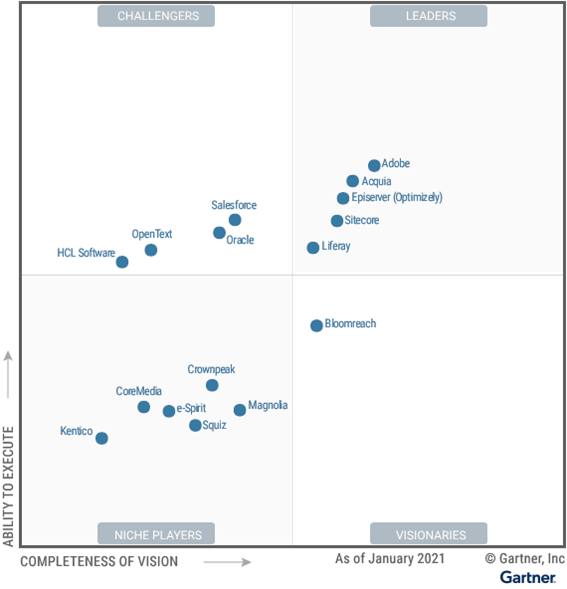
Each one of them, within their dimensions and features, cover those capabilities expected of a DXP, of which we highlight some of the main ones:
-
- Content Management
- Segmentation/ Customisation
- Omnichannel
- Commerce
- Analytics
- Optimisation
- Collaboration/ Social tools
- Interoperability and extensibility
- Cloud
- Reduced Time-to-marketBased on our extensive expertise in these three platforms and our experience, we will present various solutions/solutions/cases of common use in the market. Through actual success stories carried out by our team of the DXP community, we will show the reader how these platforms successfully solve the needs of our customers.
One of the most common cases occurs when a company wants to offer their services to third parties, either publicly or to a small group of partners. In particular, for the latter, the information is usually revealed in headless format, i.e., bypassing the visual layer and sharing only information and data.Next, we will show two real cases in which our customers lived this scenario, and how, with the help of atSistemas, we were able to implement a solution that guaranteed meeting their objectives:Case 1
An important hotel chain needs to show its customers the different services it offers: hotels, experiences, tourist guides, etc. In addition, customers must be able to make reservations and manage their account, enjoy discounts, view personalised information, search and filter results, among other functions. In short, generate engagement with customers through unique and attractive experiences.
The platform chosen for this case was Adobe AEM. The mission was not only to meet the objectives set, but also to support business growth with guarantees, adapt to the variability of demand and offer a secure and reliable environment.
The information provided to clients through the web portal is enriched with information from external systems, which is obtained through communication via API REST and thanks to a customised AEM workflow that periodically executes the synchronisation of communication, automating and controlling this process. Using these workflow mechanisms, content is automatically translated through an external translation platform. Similarly, the platform offer clients an external booking system and private area.AEM’s powerful digital asset management capabilities make it easy to contribute content and create digital experiences, organising and storing large amounts of assets in a simple and intuitive way. Time-to-market is fundamental. To reduce it, we have opted for development mechanisms such as AEM’s experience fragments, which are reusable blocks made up of a business layer and a visual layer which implement parts of the website such as headers, navigation menus, etc.
A very important aspect of delivering unique digital experiences is the personalisation of content based on the particular customer features which has been achieved by making use of the Adobe Target platform. This is a powerful tool that complements Adobe AEM by offering automatic omnichannel content segmentation at scale, as well as optimising experiences through A/B and multivariate testing, and artificial intelligence. All this is supported on a cloud infrastructure based on AEM Cloud, from the manufacturer itself, which is configured in high availability mode to guarantee the service and adjust to the demand anytime.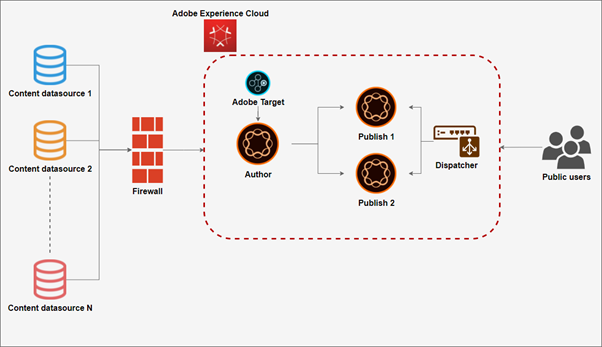
Case 2
Our client, one of the world’s leading tour operators, needs to centralise the management of its content, which comes from various sources/systems, including external providers. This content will need to be enriched (complemented) in the chosen platform, Magnolia DXP, to make it more attractive to the end user. In turn, it is necessary to expose this content in a homogeneous way to a series of external consumers (third party companies), who will finally exploit it through their own channels. In addition, the platform must be customised to incorporate the actions and business logic necessary to accommodate the scenario proposed. As an added requirement, there is the need to handle large volumes of data in an optimal way, while obtaining good performance, and all this integrated into our client’s own Azure cloud platform.
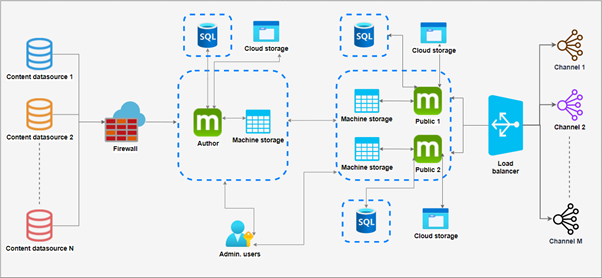
To accommodate these needs, and in close cooperation with our client, our team of experts designed and implemented a tailor-made solution:
The integration of content from different sources/suppliers was carried out through the powerful REST API offered by Magnolia, to subsequently enrich this content through customised content apps. These allow both the management of the content and the execution of the necessary business logic, as well as optimising these processes to achieve optimum performance. In turn, Magnolia’s REST API allows content to be exposed in an agile, simple and homogeneous way to any external consumer. To emphasise good performance, a Magnolia installation was configured in high-availability mode on the client’s Azure cloud account.
Thanks to the centralisation of management we have achieved a considerable cost reduction, independence from suppliers and a competitive platform cost. In addition, it manages to offer its services in a more attractive and personalised way to any channel and/or consumer, all under an adaptable platform that allows it to evolve its digital strategy both in the current and future scenario.Another common scenario is where the implementation of a business platform is required, for example, in the B2B format, where the main company facilitates the sale of its products/services to other companies/businesses. These are usually platforms of considerable criticality, as part or all of the companies’ business depends on them.
At atSistemas, we have successfully implemented several solutions that have allowed our clients to develop their business strategy with very good results:
Case 3
An important distribution company in the pharmaceutical sector needs to have a platform where it can develop its B2B strategy, in which pharmacies and associated laboratories have a portal where they can purchase different products and manage their orders, deliveries, etc. In this case, all business information related to B2B is managed through the SAP platform, external to the DXP platform, which should act as a link between the business system and the B2B customers.
Liferay DXP was the chosen platform. Taking advantage of its integration capabilities and its open source philosophy, a connector has been developed with SAP to achieve this integration between the business side and the front-end layer, covered in this case by Liferay DXP. This connector is responsible for making calls to SAP, managing data and centralising communications, and thanks to it, coupling is reduced and code maintenance is facilitated. It is worth highlighting the coupling of a powerful search engine such as ElasticSearch, which speeds up the management of the portal. To complete the integration, both portal authentication (login) and authorisation (access to data) are carried out in SAP through an SSO layer implemented on the aforementioned connector.
The entire system is supported on an on premise architecture with high availability, both at the DXP layer and at the search layer.
Some of the benefits obtained by our client in this solution have been:-
- Solid base for developing your B2B strategy
- Centralisation of communications with SAP
- Improved code quality
- Greater scalability
- Simpler and more agile maintenance
- Increased integration capacity, avoiding errors and eliminating duplications
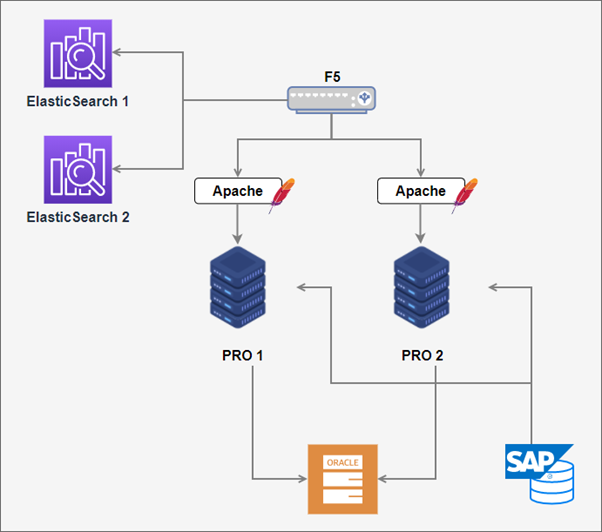
Case 4
A group of associated opticians with a considerable market share (around 12%) needs to enhance communication and provide coverage for the procedures carried out by associates when purchasing material: orders, shipments, returns, etc. The data and information relating to these orders, invoices, delivery notes, etc. are stored in an ERP from the manufacturer Ekon, and the products are managed from the CcommerceTools platform previously set up by the client, so it is necessary for the solution to interconnect all the systems present. Magnolia DXP offered all the necessary tools to bring the above scenario to fruition. All useful user information is managed through Magnolia’s content management system, allowing the marketing department to update content autonomously. Integration with Ekon is done through the powerful REST API provided by Magnolia, which communicates with the client’s own middleware that acts as an intermediary with the ERP platform. Finally, thanks to the capabilities of Magnolia’s PUR (Public User Registration) module, the system’s intranet was built where partners can carry out the aforementioned operations; the users of this intranet are synchronised with Ekon thanks to a customised extension of the PUR module.
The benefits for the client include the enhancement of the two-way interaction between the group and its partners, so that partners move from being end consumers of content to being contributors as well. Furthermore, the new virtual office allows the partner to access all the procedures with the group in an agile and comfortable way, providing value services oriented to the partner. Finally, the solution offers the partner a pleasant user experience by providing complete traceability throughout the order lifecycle, all on a scalable, maintainable and secure infrastructure.
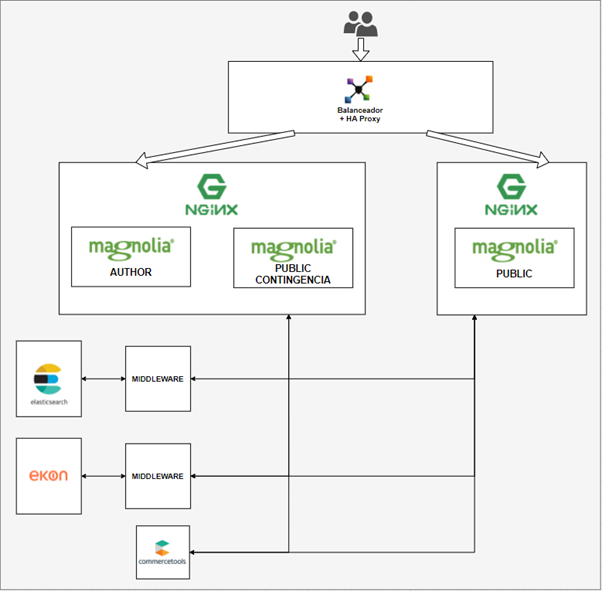
Finally, we would like to highlight those solutions in which content management is the main requirement. In these cases, it is common that our clients manage informative web portals, whether with corporate content, umbrella websites, services, etc. In these cases, the out-of-the-box capabilities offered by DXP platforms make it easier to implement the different solutions:
Case 5
A national transport consortium decided to set up a web portal where users and visitors could consult all the information on available bus and train lines, customer service, view real-time alerts, news and excursions. The website also had to have a private area where users could manage their transport cards, profile, top up their wallet, etc. All this takes place in a scenario that receives a considerable amount of user visits, given the strong impact of tourism in the area.
Based on the needs, the choice was Liferay DXP. All portal content and pages are managed and updated through the platform by non-technical users, thanks to intuitive editing tools, WYSIWYG editors and a reduced learning curve. An integration with Google maps was implemented, allowing users not only to consult but also to build their own routes through the entire transport network, as well as to search for lines and timetables, all through a personalised interactive map.
In order to optimise these searches, the Elastisearch engine was integrated together with an advanced caching system, which allows very fast access and loading of information. On the private user area, we took advantage of the powerful qualities and default functionalities of Liferay DXP in this type of digital workplaces, so that, together with the management of users, roles and permissions that it offers, it is possible to cover these needs in an agile and simple way.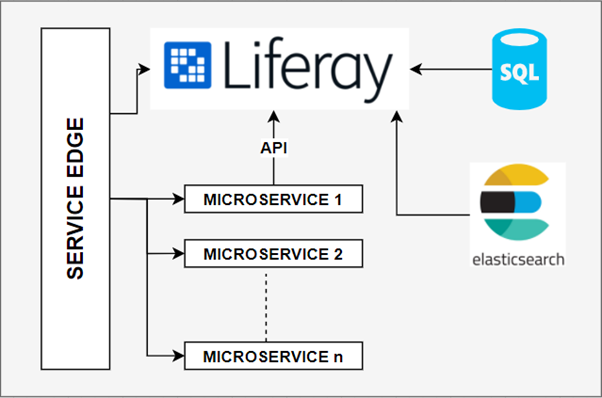
Case 6
One of the world’s leading companies in the banking sector needed to have several web portals to showcase the different support and incentive initiatives offered by the entity. Adobe AEM was the chosen platform for this solution, in which the quality and testing of the different developments is ensured on an on-premise infrastructure by means of a continuous integration cycle formed by tools such as Sonar and Jenkins. The management of the different pages, contents and digital assets (DAM) of the portal is carried out in a simple and intuitive way, thanks to the capabilities of AEM and the powerful AEM Assets functionality.
For the common parts of the pages such as the header, footer, etc., experience fragments are used, whilst reducing development time and maintenance, and a segmentation strategy is applied to the content shown to the user through Adobe Target, both on the websites and in mailing lists and similar elements. Several of the web portals have a digital workplace (intranet) for registered users, a space which has been realised using AEM Communities, which also provides functionalities to build a forum where users can interact.The main advantage obtained by our client is the ease and speed with which it is able to create new web portals and new content with much less effort than the previous solution, and reducing the time-to-market considerably, all in a scalable and reliable environment.
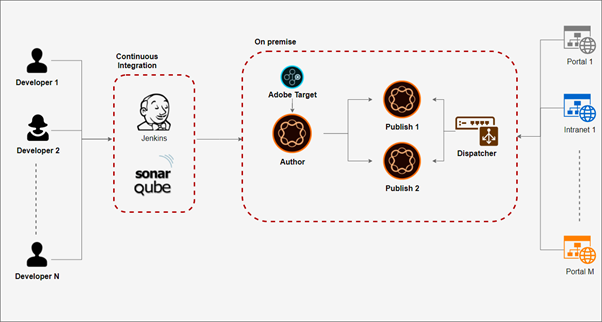
Through different solutions, we have seen how these three DXP platforms, Adobe Experience Manager, Liferay DXP and Magnolia DXP, perfectly meet the customised needs of our customers in terms of digital experiences. Although each platform differs in a number of ways, they all have powerful capabilities to meet the different demands of the market.
From atSistemas, we offer all our expertise, know-how and experience, and we will be happy to answer any questions or needs that may arise. You can contact us through our website or directly by email to marketing@atsistemas.com.
We hope you have enjoyed Reading through this article!
David Caviedes – Digital Experience Platforms Specialist
-
-

